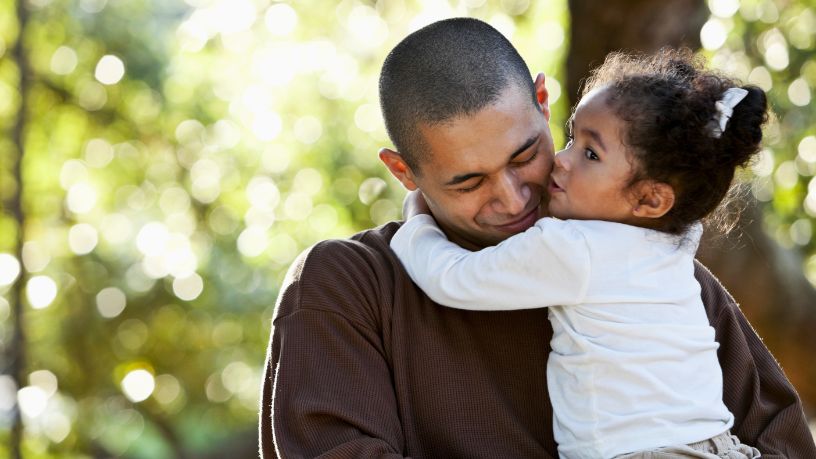On this page
Key takeaways
- Panic attacks can manifest with a variety of symptoms, including shortness of breath, dizziness and nausea.
- They can affect people differently and can feel similar to a heart attack, although they are not physically harmful.
- Using techniques such as breathing and grounding can help ease symptoms and shorten the length of a panic attack.
Panic attacks are common, with around 35% of us having at least one in our lifetime.1
Because panic attacks can happen at any time, sometimes with no clear warning or obvious trigger, living with a panic disorder or frequent panic attacks can be difficult.
Understanding what panic attacks are and how we can learn to manage them, is an important step in improving mental wellbeing and overall good health.
What is a panic attack?
“A panic attack is an intense surge of fear or discomfort, which reaches a peak within 10 minutes, and involves a number of physical and emotional symptoms,” says psychologist Dr Sasha Lynn.
“They don’t just occur in anxiety. They can happen in a bout of depression, substance use and other difficult areas of life.”
While anyone can have a panic attack, women are almost twice as likely to experience them as men.2
Panic attacks are our body’s reaction to what we call the ‘fight or flight’ response. This happens when we think we're in danger and the brain responds by flooding our bodies with chemicals such as cortisol and adrenaline that can help us run away or fight back.1 While this response is sometimes necessary if we're in actual danger, we can still get the same response when the danger is imagined.
Panic attacks can be triggered by things like extreme stress, a change in our environment and even excessive caffeine and high-intensity exercise. They can also be a result of a previous trauma or memory, or sometimes for no clear reason at all.
What are the symptoms of a panic attack?
Panic attacks can look and feel very different to each person, but common signs can include:
- increased heartrate
- tightness in your chest
- shortness of breath
- nausea
- a heightened sense of danger
- a fear of death or losing control
- feeling dizzy or lightheaded
- shakes, tingles, sweating or hot flushes.1
How to manage a panic attack
Understanding when you’re having a panic attack and knowing how to deal with it can help reduce the severity of symptoms and how long they last.
“Recognising your early warning signs of a panic attack is useful. Once you feel them coming on, learning to calm the body down with breathing and progressive muscular relaxation can be helpful,” says Dr Lynn.
“Once the body is calm, it’s time to work on the mind, learning to recognise those thoughts that are unhelpful, and challenging them.”
If you have a specific thought or situation that triggers your panic, it might seem logical to simply avoid that thing to prevent an attack from occurring. But in fact, the opposite is usually true.
“The best way to get over an attack is to go through it,” says Dr Lynn. In this way, you can desensitise yourself to the situation or thought rather than fear it.
“Sit with it, let it peak. And then wait for it to subside.”
It’s helpful to remember that panic attacks cannot harm you. While they are distressing and can cause unpleasant physical sensations, a panic attack cannot cause a heart attack or stop you from breathing.4
Breath work
During a panic attack, breathing can speed up and become less effective. This can make other physical symptoms, such as dizziness, worse. Using a breath technique can help.
The 4-7-8 breath exercise5
- Breathe in through your nose for 4 seconds.
- Holding your breath for a count of seven seconds.
- Breathe out of your mouth for 8 seconds.
- Repeat this cycle 4 times, working your way up to 8 cycles.
Grounding techniques
Panic attacks can make us feel disconnected from our bodies and the world around us. A grounding technique can help us reconnect with the present.
The 5-4-3-2-1 grounding technique helps to divert focus away from stress and panic.6
Focus on 5 objects that you can see. Name them out loud or in your head
Listen for 4 different sounds. Think about what they are and where they are coming from.
Touch 3 objects. What are they used for, and why do we need them?
Notice 2 smells. Perhaps it’s your own perfume, the grass or some laundry detergent.
Identify one taste in your mouth, perhaps your morning coffee or toothpaste.
Challenge your fears and thoughts
Lifeline Australia suggests one way to manage a panic attack is to confront it by asking yourself the following questions:
- Am I having a heart attack or is this a panic response to my anxiety?
- Given my past experience, do I truly believe that a panic attack can harm me?
- If a close friend or loved one was having a panic attack, what would I say to reassure them that this will pass?
Ask for support
Reaching out for help for panic attacks
Free online mental health program

At Bupa, trust is everything
Our health and wellbeing information is regularly reviewed and maintained by a team of healthcare experts, to ensure its relevancy and accuracy. Everyone's health journey is unique and health outcomes vary from person to person.
This content is not a replacement for personalised and specific medical, healthcare, or other professional advice. If you have concerns about your health, see your doctor or other health professional.
1Better Health Channel. (2022). Panic attack. Victoria State Government, Department of Health.
2Remes, O., Brayne, C., van der Linde, R., & Lafortune, L. (2016). A systematic review of reviews on the prevalence of anxiety disorders in adult populations. Brain and Behavior, 6(7), e00497.
3Mayo Clinic. (2018). Panic attacks and panic disorder.
4Horn, A. (2015). Phobias: The ten most common fears people hold. ABC News.
5Very Well Health. (2022). Use these breathing exercises to stop a panic attack.
6Medical News Today. (2025). How can you stop a panic attack?
You might also like...
What's the difference between anxiety and depression?
Anxiety and depression are common mental health conditions in Australia. Learn about the different signs and symptoms and where to get help.
Depression: Knowing the signs and finding help
Depression can look different for everyone. We spoke to a psychologist to find out how to recognise the symptoms of depression and where to get help.
Taking care of your mental health: Who do you call?
Looking for mental health support? Read this guide to find out what services are available.
5 ways to break the worry cycle and reduce anxiety
Anxious worrying can be destabilising. Discover 5 strategies to break the worry cycle, reduce anxiety and protect your mental and physical health.





